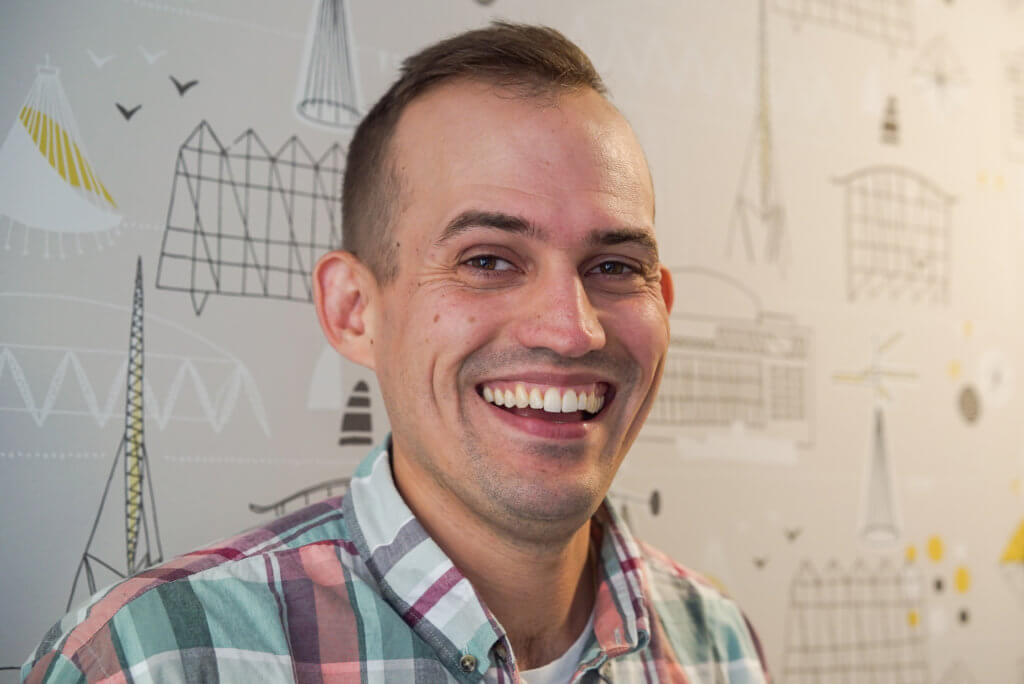Episode
Highlights
ON THE HILL
It’s the Saturday of Columbus Day weekend, and I’m walking down Atwells Avenue in Federal Hill, Providence’s historic Italian neighborhood. In just a couple minutes, there’s going to be a ceremony to commemorate the official start of the 28th annual Federal Hill Columbus Day Festival.

Ana with Roman re-enactors | Photo: Ana González

A high school marching band warms up before the parade | Photo: Ana González
GROWING UP ITALIAN
Since the 1850s, Italians have been settling on the West Side of Providence because it was a Catholic community.
“Everything I’ve done is in this neighborhood. I went to school here. I spent most of my time here. I mean my house is literally you could hit it with a baseball. It’s my enclave, it’s where I feel safe, it’s where I feel comfortable.”
“And you know we lived in a cold water flat. And in one of the apartments, there wasn’t even a tub. But you know what? We never knew we were poor.”
—JOHN LOMBARDI
If you look around Federal Hill today, there aren’t any bathhouses, but there are a lot of 6-family homes, and everything is tightly-packed and walkable. Signs that a lot of people were in the same boat as John’s family.

Steve, Tommy, Tommy, and Joe from the Italo-American Club in the parade | Photo: Ana González
ITALO-AMERICANS
“We all belong to the Italo-American club. We’re all Italians. We’ve marched in this parade since its beginning. And these are all members of our executive board. Tommy, Tommy and Joe. That’s it. My name is Steven Malane. And it’s a great thing to be Italian today. You celebrate the, you know, all the things that Italians did, and Christopher Columbus. That he came here, and then made a free world. And we’re glad to do it, and we’ll pass it on to different generations and different people.”
—STEVE MALANE
“You’re giving people of our heritage a format to be proud of who they are. And it’s not so much about Columbus. But it’s about the traditions: the sausage and peppers, the yelling up and down the street. I mean all of these things are things that are close to us. And that’s really what matters should matter to us.”
—ARMANDO
LEGACY OF BUDDY
Buddy Cianci, by the way, is a huge reason why this festival is more than a Catholic procession. In 1974, he was elected as the first Italian-American Mayor of Providence. And one of his big projects while mayor is to bring business to Federal Hill. So, with a little help from the Federal Hill Business Association and the Knights of Columbus, Mayor Cianci brings Columbus Day to Atwells Avenue. And now, it’s a tradition.

Christopher Columbus Statue vandalized | Photo: Ana González
GENOCIDAL MOTHER******
I’m standing in front of a statue of Christopher Columbus at the intersection of Elmwood and Reservoir Avenues on the South Side of Providence. Early this morning, protesters poured bright red paint all over the statue. It looks like blood. It’s the day after the parade, Columbus Day.
“F*** Columbus! Genocidal mother******!”
—YELLED FROM A PASSING CAR
On the base of the statue, they chained a plywood sign that reads, “Stop Celebrating Genocide”. It’s a shocking sight, but it seems welcome among all of the people walking by.
“It doesn’t belong here, to be honest. I mean, what did Christopher Columbus do for the people? He’s largely celebrated for nothing. For what it says right on the sign. Genocide. Killing people. Massacres.”
—RUBEN
As we’re making small talk, the Public Works department rolls up with a scrub brush, a bolt cutter and a power washer. They spray the statue with chemicals, scrub, and start power washing it. After about 15 minutes, Columbus is clean again. The camera crews pack up, the onlookers go home, and Christopher Columbus is left to stand another year.

Worker cleaning the Columbus statue | Photo: Ana González


